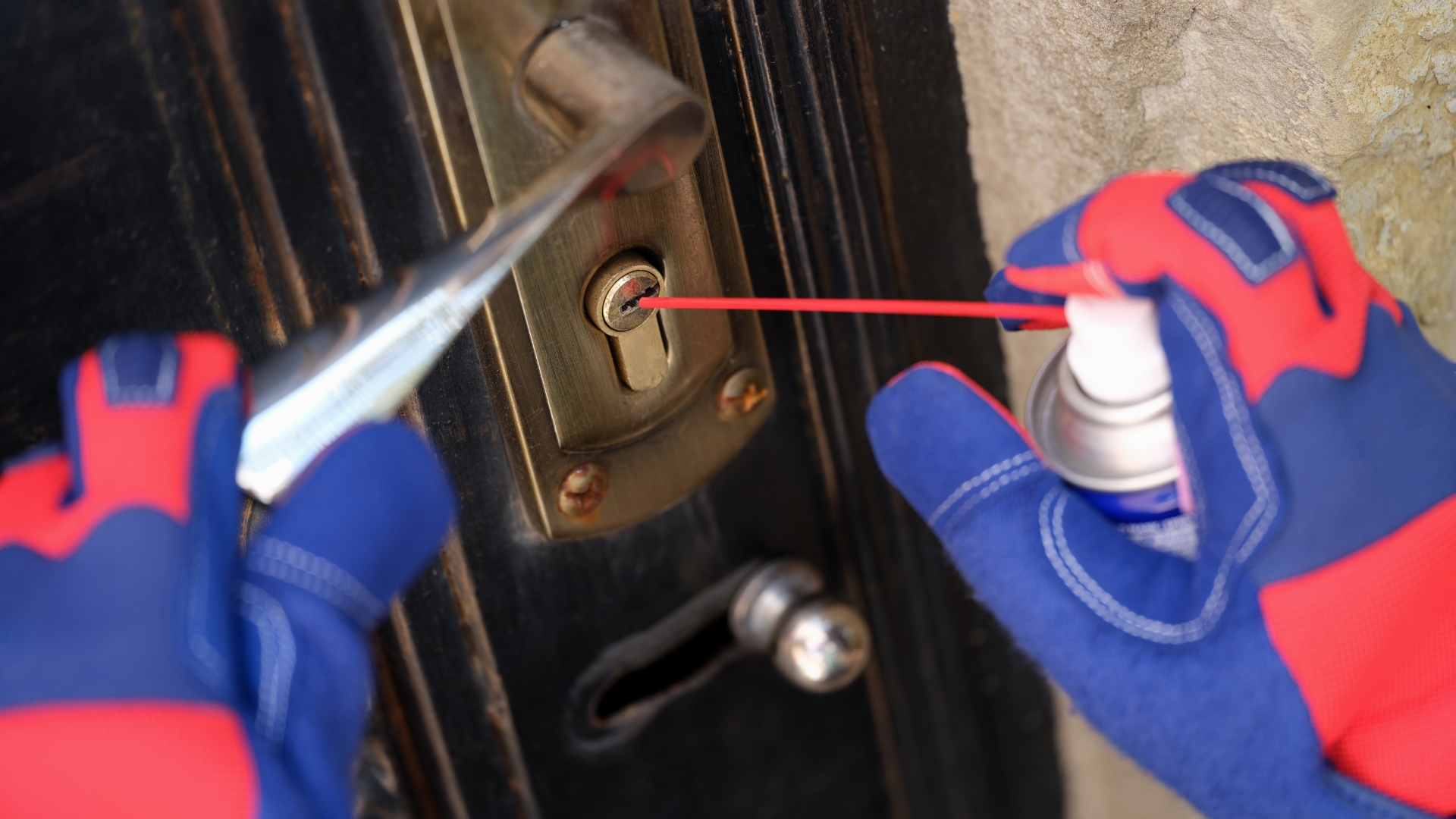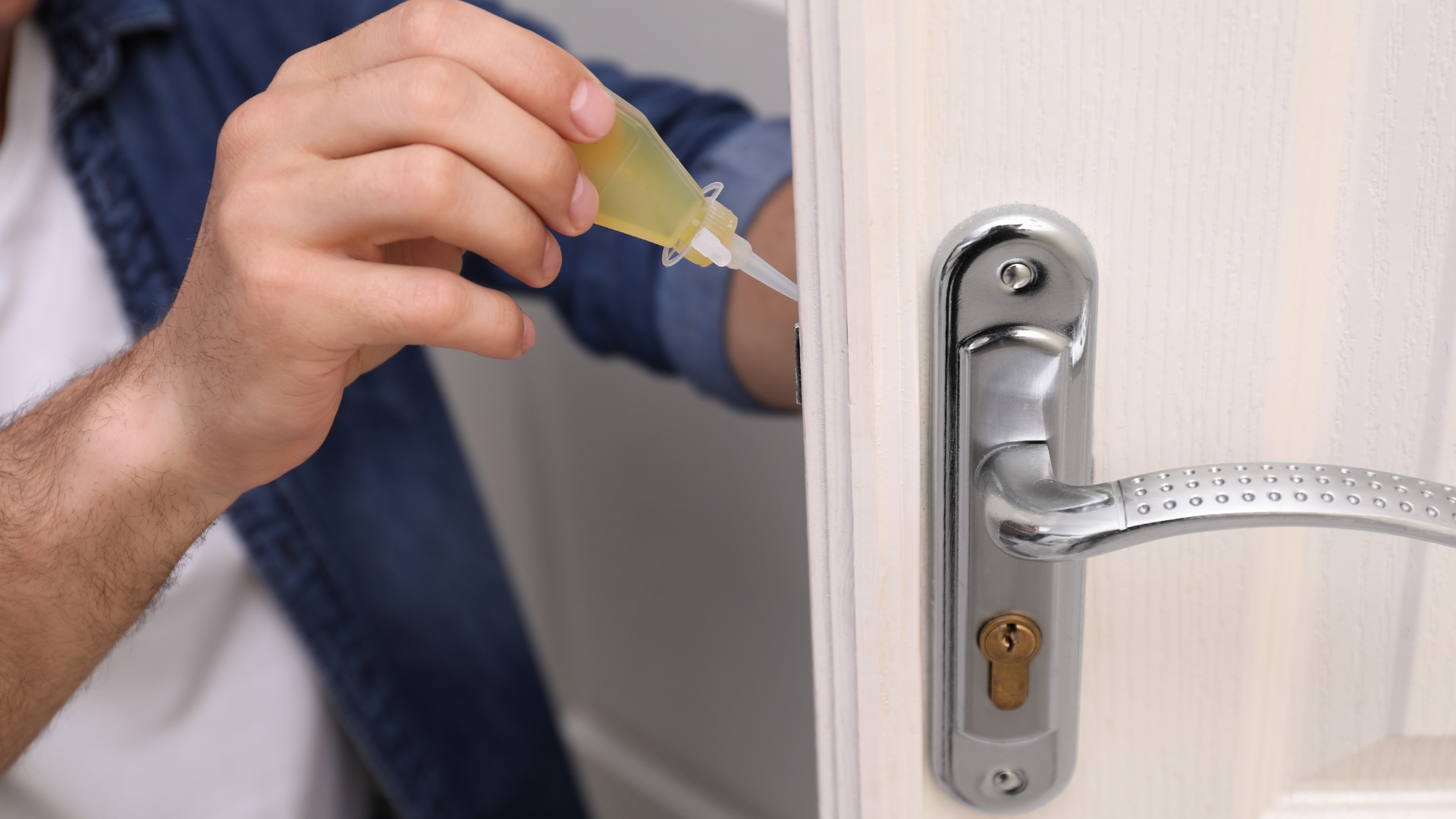A quality door lock is an important addition to any home. It will not only keep intruders out but also helps keep your family safe and secure. Unfortunately, any door lock can be damaged by weather conditions, physical abuse, or wear and tear. Without any lubrication, a lock can rust and malfunction. The most common door lock problems are frozen or sticking locks. That can be especially dangerous during emergencies when you need the lock to work the most. Follow these steps to learn how to lubricate your door lock easily and effectively.
Steps for Lubricating a Door Lock With Dry Lock Lubricant
Locks typically last approximately seven years. However, you can extend that lifespan depending on how well you maintain your locks. You can clean your locks with compressed air and a spray cleaner to remove rust and grime from locks.

Step 1: Clear away any buildup in the keyhole
One of the most common causes of lock malfunctions is dust accumulation in the locking mechanism. First, clear away any buildup and remove any foreign objects stuck in the keyhole. Next, hold your hand around the keyhole and use pressurized air or an air compressor to shoot a stream of air into it. That will blow out any accumulated dust and may remedy the problem.
Step 2: Spray cleaner into the keyhole
To clean a lock cylinder, spray the keyhole and side grooves of the lock with a cleaner. If you are going to use a spray type of cleaner, use a product that contains Teflon, such as this aerosol spray from Gumout. Let the cleaner soak for five to ten minutes, then use a toothpick to remove any debris caught in the mechanism.
Step 3: Lubricate the door lock with dry lube
Use dry lube with a straw to avoid accumulating dust inside the lock. Make sure to use a non-petroleum-based product. Apply the lube closer to the keyhole than the end of your lock. Then wiggle your key to disperse the lubricant within the lock.
Remember: Door locks and deadbolts should not be lubricated with liquid lubricants like WD-40. Over time, these substances will attract dust and grime, potentially gumming up the pin tumblers and causing them to stick in the chamber. In a pinch, you can use WD-40 as a temporary measure. However, this should only be done as a last resort.
Steps for Lubricating a Door Lock With Graphite Lock Lubricant
Graphite is a great choice for lubricating pin tumbler locks, as it attracts far less dust and offers an anti-gumming feature. Graphite with anti-stick properties can also be used to prevent the buildup of dirt inside the lock and keep it in good working condition.

Step 1: Remove the graphite from the pencil
Remove the graphite from your pencil using a knife (a pocket knife will do) or a sharpener. Next, shave the wood until at least one inch of graphite is exposed. Alternatively, you can simply purchase a graphite-based lubricant like this one from Q20. Then, do Steps 1 and 2 as instructed above.
Step 2: Apply graphite lubricant to the keyhole
Once you have enough graphite, insert the pieces into the lockset. Make sure you do not insert the whole thing — just the pieces. If using graphite lock lubricant, apply a few drops of the liquid onto the outside of the keyhole as you would on any other lock.
Step 3: Use the key to grind the graphite
To free the graphite from the keyhole, you will need to turn the key inside of it repeatedly. Keep doing this until all of the graphite has been turned into powder. Once this happens, your key should be able to turn smoothly and easily.
Locksmith Services from MacArthur Locks & Doors
Does your key no longer turn, or does your lock need replacing? Sometimes, the fix is quick and easy—maybe it needs a little grease! Yet, determining the proper lubricant for your door lock can be tricky. MacArthur Locks & Doors is the leading provider of locksmith services in the Washington, DC, area. We offer a full suite of residential locksmith services, including lock repair and door lock repair. From lock replacement to door lock maintenance, we have you covered. Our team of experienced professionals is always on standby to help, so do not wait any longer—call us today and get started!
